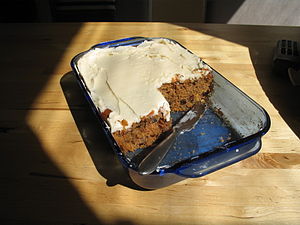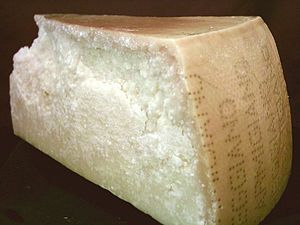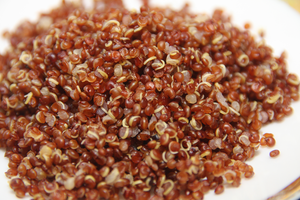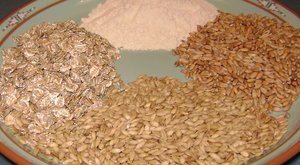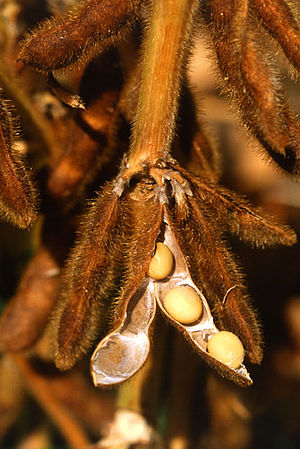Being 1/2 Italian, pasta is one of my favorite things ever - and I'm not alone. Problem is, carbs, carbs, carbs. With so many people trying to eat healthier, even the thought of enjoying a pasta meal may seem to be literally off the table. A big plate of pasta smothered in rich sauce conjures up thoughts of an expanding belly, unbuttoned pants, and practically rolling out of the dining room to settle onto the couch and sink into a carbohydrate induced snooze.
|
|
| Balsamic parmesan pasta (Photo credit: Wikipedia) |
But, pasta doesn't have to be a fat saturated, carbo-loaded meal. Actually, many of the more popular pasta dishes passed down from generation to generation weren't originally so extreme. Pasta dishes were meant to be rich in flavor, and not in bulk. Those healthy recipes have, through the years, been diluted down in flavor and heaped up into huge portions and fatty sauces - far from the light and flavorful Italian cuisine they originated from.
What do we do to eat healthier pasta dishes? Go back to the original recipes which were packed with flavor, keeping in mind
quality more than quantity. Here are three pasta classics that are made to please your taste buds and your appetite without eating huge portions.
Vodka Penne
This is a ridiculously simple meal that has intense flavors so even a small portion will make a big impression on your taste buds without overwhelming your stomach. To make this dish, choose a good quality marinara sauce (keep an eye on this blog for recipes), a cup of vodka, half a cup of room temperature heavy cream, a half cup of grated Parmesan cheese, and a pound of your favorite penne pasta, even whole wheat. This recipe makes a lot of servings, so each portion only has a very little cream in it, translating to less than fifty calories from the cream. But, the creaminess adds to the satisfaction, which again means smaller portions.
The marinara and vodka simmer in a skillet over low heat to cook out the alcohol but leave the flavor. About twenty minutes into the cooking process, the cream is added to give the sauce a rich creamy texture, which also cuts some of the acid from the tomatoes. Once the skillet comes back up to temperature, the Parmesan is stirred in until it melts. Meanwhile, the penne is cooked until al dente, then drained, dumped into the sauce and stirred to coat. A small plate is all you will need to satisfy your hunger due to the super flavor and creamy taste. And the leftovers are divine!
Parmesan Prosciutto Cavatappi
This is a nice light pasta dish that will become a go-to meal for your family because it's so easy to make and so tasty. All you need is cavatappi, which is a spiral shaped hollow pasta (my favorite pasta shape!), minced garlic, some fresh parsley, olive oil, thinly sliced prosciutto, and freshly shaved Parmigiano-Reggiano cheese.
Cook the cavatappi according to directions, reserving about three tablespoons of the pasta water after cooking, then drain the pasta well. In a big skillet, add a little olive oil and cook the garlic for about a minute. Then add the reserved liquid, prosciutto and parsley, stir together, then add the cavatappi. Taste and add salt and pepper, then top with the shaved cheese and stir immediately to melt the cheese. Serve hot with more shaved cheese on top if desired. This simple pasta dish is perfect for anyone who wants to do minimal work preparing a meal but enjoy maximum flavor. And, again, this dish has such depth of flavor that you need only a small portion size to satisfy your appetite.
|
|
| Parmigiano-Reggiano cheese, the true "parmesan" (Photo credit: Wikipedia) |
Lemon Basil Parmesan Pasta
How can you go wrong with two powerhouses of flavor like lemon and basil? With the refreshingly light taste of lemon and the earthier taste of basil, the flavors play off each other perfectly. Add to that the saltiness of Parmesan cheese and you won't leave the table wanting. For this simple dish all you'll need is 1 pound of spaghetti, 2 cups of freshly grated Parmesan, 3/4 cup of lemon juice, 1/2 cup olive oil, 1/2 tablespoon of lemon zest, and 2 cups of basil leaves cut chiffonade style.
Cook the spaghetti until just al dente. While the pasta is cooking, put the Parmesan and lemon juice in a big serving bowl and start whisking, adding the olive oil in while you whisk until it becomes creamy and frothy. Sprinkle with salt and pepper, add the lemon zest, and stir to combine. Then add the cooked, drained spaghetti along with the basil, tossing all to coat well with the dressing. This light and lemony dish boasts such powerful flavors that you'll naturally eat a dainty portion, keeping the calories, carbs, and fat at a very respectable level.
When you cook pasta dishes using powerful, multi-layer flavors, you don't have to heap a big dinner plate full to satisfy your appetite. Start with healthier ingredients, like olive oil, lemon, herbs, and whole wheat pasta, then you can add in the foods and flavors that change an ordinary plate of noodles to a fantastic gourmet pasta dish that any restaurant would be proud to serve. And with flavors that pack a punch, you won't pack on the pounds. Enjoy smaller portions, healthier ingredients, and bigger flavor when you cook these delicious pasta dishes on the lighter side.


